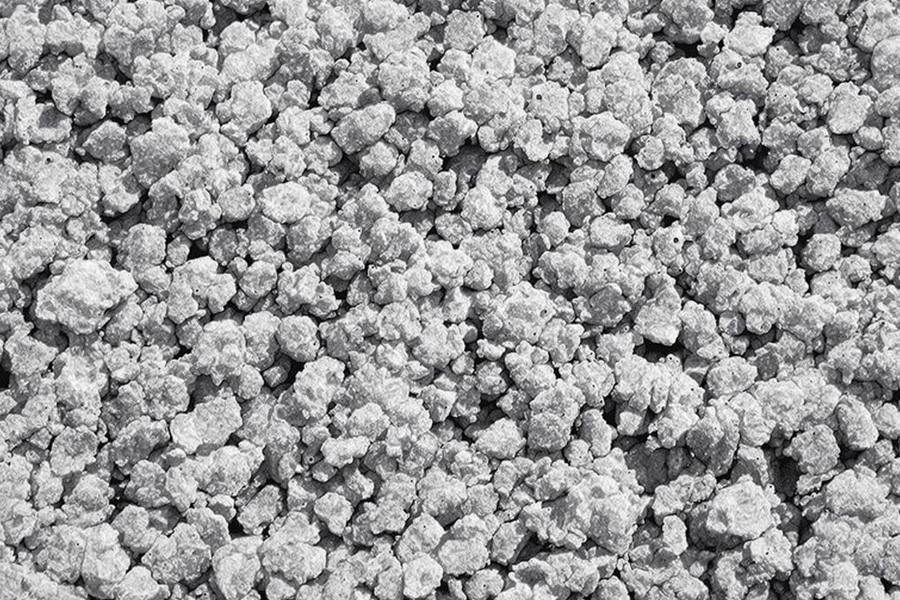
What Is Asbestos?
Asbestos is a group of naturally occurring minerals made up of fine, durable fibers. For decades, it was widely used in various industries due to its resistance to heat, fire, and chemicals. These fibers, however, are microscopic and can become airborne, posing significant health risks. While asbestos itself is odorless, its presence in building materials often goes unnoticed unless tested in a lab. This makes professional identification critical, especially in older homes or workplaces.
Common Uses of Asbestos in Construction
Historically, asbestos was a favorite in construction because of its strength and insulating properties. Some common applications included:
- Insulation for pipes and boilers.
- Roofing and siding shingles.
- Vinyl floor tiles and adhesives.
- Cement sheets and corrugated roofing.
- Fireproofing materials sprayed on steel beams.
Even though its use has been reduced significantly, traces of asbestos still linger in older structures, making awareness and testing essential.
Health Risks Associated with Asbestos
The dangers of asbestos arise when its fibers are disturbed and become airborne. Once inhaled, these fibers can lodge in the lungs, causing serious health issues such as:
- Asbestosis: Scarring of lung tissue that leads to chronic breathing problems.
- Lung cancer: A direct result of prolonged exposure.
- Mesothelioma: A rare but aggressive cancer affecting the lining of the lungs or abdomen.
Interestingly, the risks of asbestos exposure are often underestimated. Much like the denial seen in addiction rehab scenarios, individuals may downplay the hazards of asbestos until symptoms appear. Early detection and prevention are key to mitigating long-term health consequences.
The Myth of Asbestos Odor
Does Asbestos Have a Smell?
Asbestos, despite being a hazardous material, is completely odorless. Unlike substances such as natural gas or mold, which can emit distinct smells, asbestos fibers cannot be detected through scent. This lack of smell makes asbestos particularly dangerous, as it can go unnoticed until it is disturbed and airborne fibers are released. Many people mistakenly believe they can “sniff out” asbestos, but this is not the case.
Why Asbestos Is Odorless
The reason asbestos lacks an odor lies in its physical composition. Asbestos is a group of naturally occurring minerals, and its fibers are microscopic and inert. These fibers do not contain volatile compounds that would emit a smell. Any perceived odors in areas with asbestos are typically from other materials or chemicals present, not the asbestos itself.
Misconceptions About Detecting Asbestos by Smell
There are several myths surrounding the detection of asbestos by smell:
- Old Building Smells: People often associate musty or chemical smells in older buildings with asbestos. However, these odors are more likely from mold, mildew, or deteriorating building materials.
- Demolition and Renovation: During demolition or renovation, odors from adhesives, paints, or solvents can be mistaken for asbestos. In fact, these smells are unrelated to asbestos fibers.
- Dust and Debris: The scent of dust or debris during construction projects may lead some to believe they are smelling asbestos. In reality, asbestos is completely undetectable without specialized testing.
For those concerned about asbestos in their homes, asbestos in homes is not a direct threat if left undisturbed and in good condition. Testing and professional inspection are the only reliable ways to confirm its presence.
Identifying Asbestos in Building Materials
Signs of Asbestos-Containing Materials
Asbestos was widely used in construction before its health risks became widely known. It’s often found in older homes and buildings, especially those built before the 1990s. Common materials that may contain asbestos include insulation, ceiling tiles, siding, and flooring. While it’s impossible to identify asbestos just by looking, some materials are more likely to contain it, such as popcorn ceilings or vinyl floor tiles. If the material is deteriorating—cracking, flaking, or showing wear—it may release asbestos fibers into the air, increasing health risks.
Testing for Asbestos in Your Home
The only way to confirm the presence of asbestos is through proper testing. Homeowners can purchase DIY asbestos testing kits, but these often lack accuracy and can be dangerous if not used correctly. It’s safer and more reliable to hire a professional who can take samples without spreading fibers. Typically, these samples are sent to a certified laboratory for analysis. Testing is essential before any renovation or demolition to avoid accidental exposure.
Professional Asbestos Inspection Services
For peace of mind and safety, consider scheduling a professional asbestos inspection. Trained inspectors know where to look and how to handle potential asbestos-containing materials. They’ll assess your home, collect samples, and provide a detailed report on whether asbestos is present. Hiring a professional is especially important if you suspect asbestos in hard-to-reach areas like ductwork or insulation. Remember, disturbing these materials without proper precautions can be hazardous.
The Role of Smell in Asbestos Detection
Can You Smell Asbestos During Demolition?
Demolition projects often stir up dust and debris, leading to a mix of odors from various materials. However, asbestos itself is completely odorless. What people sometimes think is an “asbestos smell” is usually the scent of other deteriorating materials, such as old insulation or wet carpet. During demolition in a rehab facility, for instance, the musty or chemical-like smells are more likely linked to adhesives, paints, or solvents used in the building’s construction. Relying on smell to detect asbestos is not only ineffective but also dangerous. Exposure to airborne asbestos fibers can occur without any noticeable scent, making professional testing essential.
Odors Associated with Asbestos Removal
While asbestos removal doesn’t produce a smell from the asbestos itself, the process can release odors from surrounding materials. Wetting agents, used to suppress airborne fibers during removal, may emit a mild smell. Additionally, solvents used to strip asbestos-containing adhesives can produce strong chemical odors. It’s important to note that these smells are not indicative of asbestos but rather the materials and chemicals involved in the abatement process. If you’re in a rehab facility undergoing asbestos removal, it’s critical to avoid the area to prevent inhaling any residual dust or fibers.
Why Smell Is Not a Reliable Indicator
Asbestos fibers are microscopic and lack any detectable odor. This makes smell an unreliable and misleading indicator of its presence. People often associate certain smells, like mustiness or chemical fumes, with asbestos due to the materials around it breaking down. This misconception can lead to a false sense of security or unnecessary panic. The only way to confirm asbestos is through professional testing, which involves sampling and laboratory analysis. In environments like a rehab facility, where safety is paramount, relying on smell alone could result in significant health risks.
Health Implications of Inhaling Asbestos
How Asbestos Fibers Enter the Body
When asbestos fibers are inhaled, they bypass the body’s natural defenses due to their microscopic size. These fibers can settle deep in the lungs or even migrate to the lining of the abdomen or heart. The body’s inability to break down these fibers means they remain lodged in tissues, causing inflammation and scarring over time. This persistent irritation can eventually lead to severe health conditions, including various forms of cancer.
Long-Term Health Effects of Asbestos Exposure
The health effects of asbestos exposure often take years, even decades, to appear. Diseases like mesothelioma and asbestosis are directly linked to prolonged exposure. Common long-term health issues include:
- Mesothelioma: A rare and aggressive cancer affecting the lining of the lungs, abdomen, or heart.
- Asbestosis: A chronic lung disease caused by scarring from asbestos fibers.
- Lung Cancer: Both small cell and non-small cell lung cancers are associated with asbestos exposure.
- Other Cancers: Ovarian, laryngeal, and stomach cancers have also been linked to asbestos.
Symptoms such as persistent coughing, shortness of breath, and chest pain may signal these conditions, but they often don’t manifest until the diseases are well-advanced.
Preventing Exposure to Airborne Asbestos
Prevention is key when it comes to asbestos-related illnesses. To minimize risk:
- Avoid disturbing materials that may contain asbestos, such as old insulation or flooring.
- Hire certified professionals for testing and removal of asbestos-containing materials.
- Use protective equipment and follow safety guidelines if you must handle suspect materials.
For those already exposed, regular medical check-ups can help detect potential issues early. Understanding the risks and taking proactive measures can significantly reduce the likelihood of developing asbestos-related diseases.
Asbestos Abatement and Removal
What Is Asbestos Abatement?
Asbestos abatement is the process of safely managing, sealing, or removing asbestos-containing materials (ACMs) to prevent exposure to hazardous fibers. This process is critical in both residential and commercial settings, especially during renovations or demolitions. Proper abatement ensures that asbestos fibers do not become airborne, reducing health risks for everyone involved.
Steps in Safe Asbestos Removal
Removing asbestos is a meticulous process that requires certified professionals. Here’s an overview of the steps typically involved:
- Assessment and Testing: A professional will inspect the property and collect samples to confirm the presence of asbestos. Laboratory testing is essential to identify ACMs accurately.
- Preparation: The area is sealed off to prevent contamination. Negative air pressure systems and protective barriers are set up to keep asbestos fibers contained.
- Removal: Trained teams carefully remove the asbestos materials, often wetting them to minimize airborne particles. Specialized equipment is used to handle and transport the waste.
- Disposal: Asbestos waste is sealed in airtight containers and transported to approved disposal facilities.
- Final Inspection: After removal, the area is re-tested to ensure no lingering fibers remain.
Choosing Certified Asbestos Removal Professionals
Not all contractors are qualified to handle asbestos. When selecting a professional, look for the following:
- Certification and Licensing: Ensure the team is certified by state or federal boards to handle asbestos safely.
- Experience and References: A reputable company should have a track record of successful abatement projects.
- Transparent Pricing: Be wary of vague estimates. For example, asbestos removal costs can range from $450 to $6,000 depending on the scope of work.
By hiring certified experts, homeowners can avoid unnecessary risks and ensure the job is done correctly. Companies like Serenity at Summit emphasize the importance of professional handling to protect health and safety during the abatement process.
Common Misunderstandings About Asbestos
Asbestos and Mold: Key Differences
Many people confuse asbestos with mold, but they are entirely different hazards. Mold is a biological organism that grows in damp environments, while asbestos is a mineral fiber found in certain building materials. Unlike mold, asbestos does not grow or spread over time. Instead, it becomes dangerous when disturbed and fibers are released into the air. Understanding this distinction is critical to addressing each issue appropriately.
Debunking Myths About Asbestos Detection
One of the most common myths is that asbestos can be identified by smell or sight. Asbestos fibers are microscopic, making them impossible to detect without specialized equipment. Some believe that older homes always contain asbestos, but this isn’t necessarily true. While many homes built before the 1980s may have asbestos-containing materials, not every old building is hazardous. Laboratory testing remains the only reliable way to confirm its presence.
Why Testing Is Essential
Relying on assumptions or visual inspections can lead to dangerous exposure. Professional testing ensures accurate identification of asbestos in materials like insulation, floor tiles, or roofing. Testing is especially important during renovations or demolitions, as disturbing asbestos-containing materials can release harmful fibers. Always consult certified professionals for asbestos testing and removal to safeguard health and comply with regulations.
The Importance of Professional Asbestos Testing
How Laboratories Test for Asbestos
Professional asbestos testing is the only reliable way to confirm the presence of asbestos in a building. Laboratories use advanced equipment to analyze samples collected from suspected materials, such as insulation, tiles, or drywall. These tests can detect even trace amounts of asbestos fibers. Without proper lab analysis, it’s impossible to confirm contamination.
When to Consider Professional Testing
If your home or workplace was built before the 1980s, it’s a good idea to test for asbestos, especially before renovations or demolition. Other signs, like crumbling materials or unexplained respiratory issues, may also warrant testing. Evoke Wellness recommends consulting licensed professionals to ensure safety.
Costs and Benefits of Asbestos Testing
While professional testing may seem costly upfront, it can save money and health risks in the long run. The benefits include:
- Identifying hazardous materials before they become airborne.
- Preventing accidental exposure during construction.
- Ensuring compliance with local and federal regulations.
Hiring certified experts, like those recommended by Evoke Wellness, ensures accurate results and peace of mind.
Regulations and Guidelines for Asbestos Handling
EPA Guidelines on Asbestos
The Environmental Protection Agency (EPA) plays a significant role in regulating asbestos use and removal in the United States. The Toxic Substances Control Act of 1976 grants the EPA authority to oversee asbestos handling, ensuring public safety. Notably, the EPA recently implemented a ban on ongoing uses of chrysotile asbestos, effective March 18, 2024. This milestone reflects ongoing efforts to reduce asbestos-related risks, though legacy uses still require attention.
State-Level Regulations for Asbestos
In addition to federal oversight, individual states have their own asbestos regulations. These laws often mandate:
- Licensing requirements for professionals involved in asbestos removal.
- Notification protocols before demolition or renovation projects.
- Standards for the safe disposal of asbestos-containing materials (ACMs).
Homeowners and contractors must familiarize themselves with their state’s specific rules to avoid legal penalties.
Legal Requirements for Asbestos Removal
Proper asbestos removal is not just a matter of safety—it’s a legal obligation. Key legal requirements include:
- Hiring certified asbestos abatement professionals to manage removal.
- Conducting air quality tests post-removal to confirm safety.
- Adhering to strict disposal procedures to prevent environmental contamination.
Given the complexity of regulations, professional guidance is often necessary. Just as addiction rehab requires trained specialists, asbestos handling demands certified experts to ensure compliance and safety.
Odors Commonly Mistaken for Asbestos
Smells from Old Building Materials
When people think they are detecting asbestos by smell, they are often reacting to odors from other aging building materials. For instance, damp insulation, rotting wood, or deteriorating drywall can release distinct smells. These odors are not only unpleasant but can also create confusion about the presence of asbestos. It’s important to note that asbestos itself is completely odorless, so any smells in an older structure are likely unrelated to its presence.
Chemical Odors During Renovation
Renovation projects often stir up a variety of smells, especially when adhesives, paints, or chemical solvents are involved. These substances can emit strong, sometimes overwhelming odors that some might mistakenly associate with asbestos. For example, solvents used to remove old adhesives or asbestos tape can produce noticeable chemical fumes. While these smells can be irritating, they are not indicators of asbestos contamination.
Dust and Debris in Construction Zones
Construction zones are notorious for producing dust and debris, which can carry a musty or earthy odor. This is particularly common when demolishing old buildings or handling materials like plaster and cement. While the dust may smell unpleasant, it’s often just a mix of dirt and particles from the materials being disturbed. Indoor air quality (IAQ) issues can arise in such environments, but the presence of asbestos cannot be determined by smell alone. Proper testing is essential to identify any risks.
Preventing Asbestos Exposure in Homes
Identifying High-Risk Areas
Understanding where asbestos might be in your home is the first step in prevention. High-risk areas often include older insulation, roofing materials, and certain types of flooring. If your home was built before the 1980s, there’s a higher chance it contains asbestos. It’s important not to disturb these materials, as doing so can release harmful fibers into the air. Instead, consult a professional to assess the situation.
Steps to Minimize Exposure
To reduce the risk of exposure, homeowners should:
- Avoid drilling, cutting, or sanding materials that might contain asbestos.
- Seal off areas where asbestos-containing materials (ACMs) are present, especially if they appear damaged.
- Hire trained professionals for renovations or demolitions in older homes.
If you suspect asbestos, testing is essential before proceeding with any work. This ensures that the risk of airborne fibers is minimized.
When to Seek Expert Advice
Sometimes, the best course of action is to leave suspected asbestos alone. Asbestos is often harmless when undisturbed. However, if you notice signs of wear or damage, it’s time to call in experts. Professional asbestos inspectors can confirm its presence and recommend appropriate treatment or removal methods. The EPA’s proposed ban on ongoing asbestos uses highlights the importance of addressing this hazard promptly and safely.
The Science Behind Asbestos Fibers
Physical Properties of Asbestos
Asbestos is a naturally occurring mineral made up of tiny, fibrous crystals. These fibers are incredibly durable and resistant to heat, chemicals, and electricity. This is why asbestos was widely used in construction and manufacturing for decades. However, the very qualities that make asbestos useful also make it dangerous. When disturbed, its fibers can break apart into microscopic particles that float in the air for long periods, making them easy to inhale.
Why Asbestos Is Dangerous
The danger of asbestos lies in its fibers. Once inhaled, these fibers can embed themselves in the lining of the lungs, abdomen, or heart. Over time, this can lead to serious illnesses like asbestosis, lung cancer, or mesothelioma. Unlike other materials, asbestos doesn’t break down or dissolve in the body, so its effects are long-lasting and cumulative. This is why proper asbestos rehab and abatement are crucial when dealing with older buildings.
How Asbestos Becomes Airborne
Asbestos fibers are most dangerous when they become airborne. This typically happens during construction, demolition, or improper handling of asbestos-containing materials (ACMs). Common scenarios include:
- Renovations in older homes with asbestos-based insulation or tiles.
- Natural wear and tear of materials that contain asbestos.
- Improper removal or disposal of ACMs.
To minimize risks, it’s essential to hire professionals for asbestos rehab and removal. They use specialized techniques to prevent fibers from becoming airborne, ensuring a safer environment for everyone involved.


